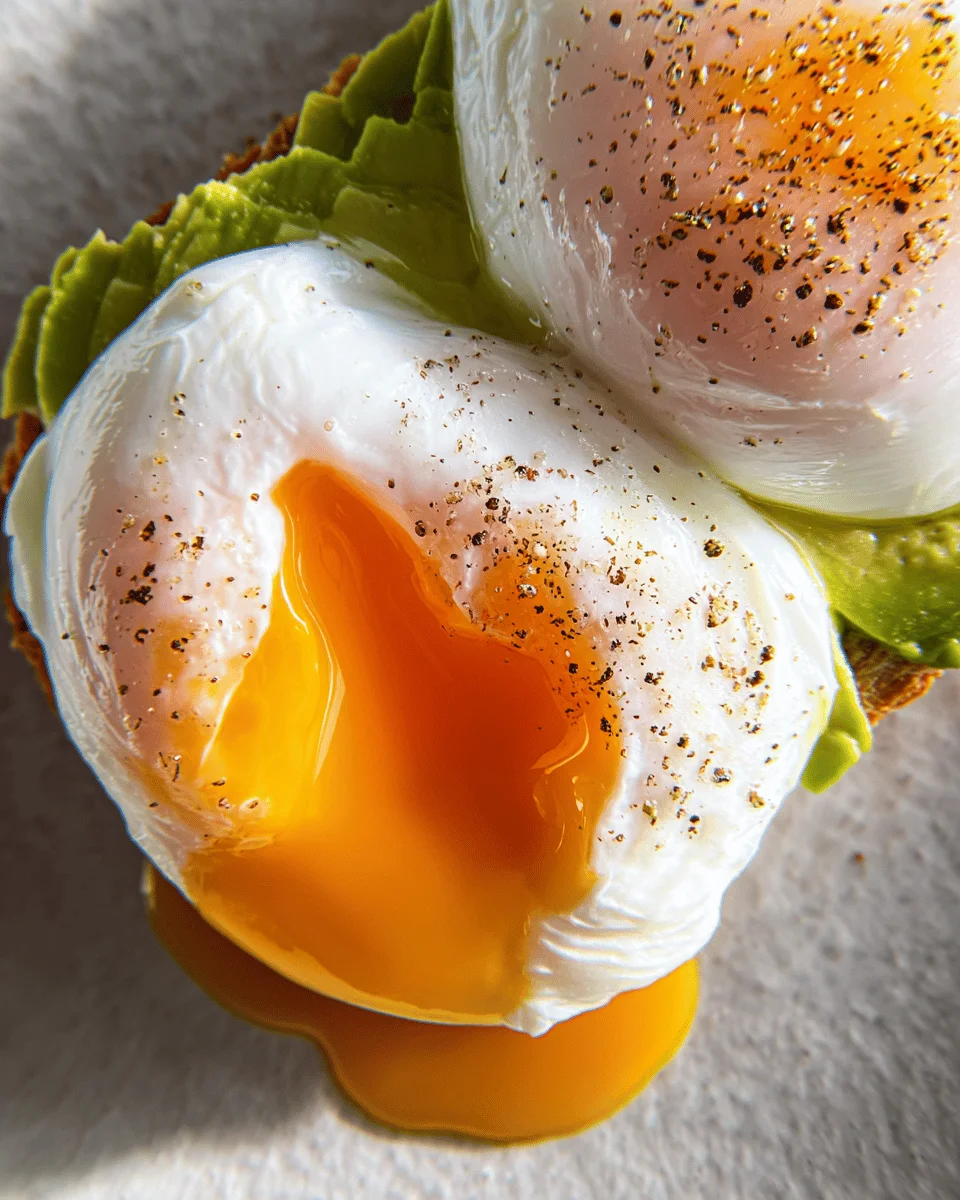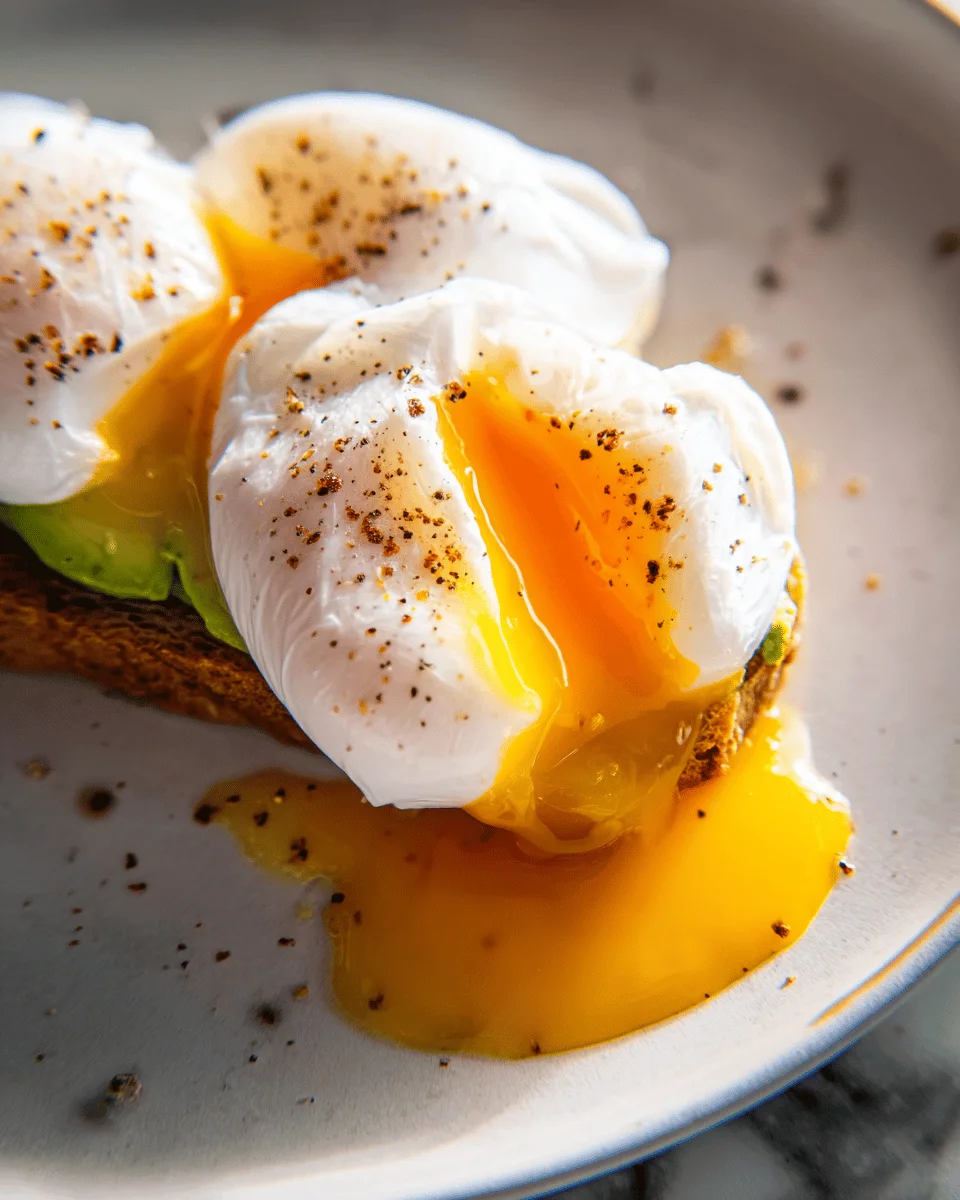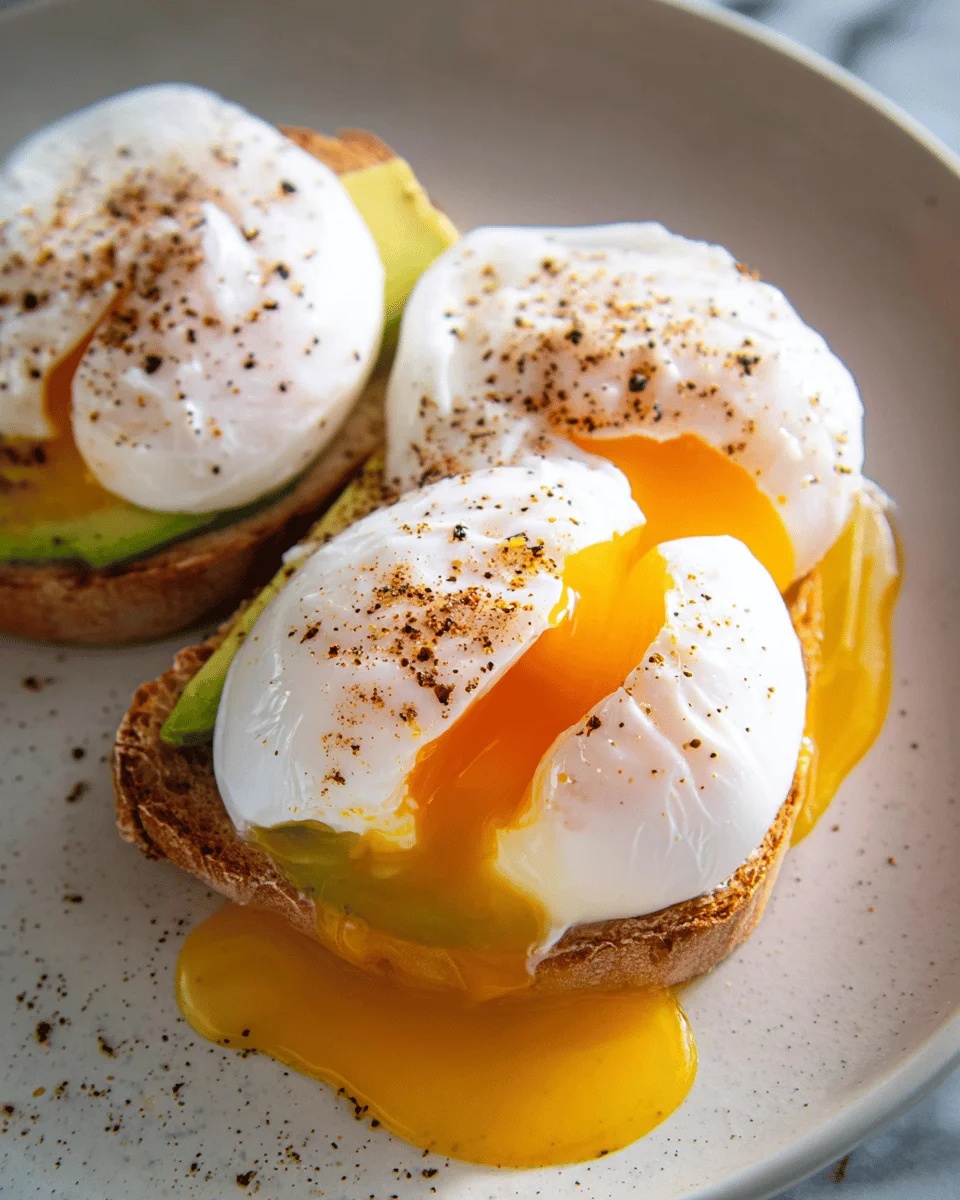Learning how to poach an egg is a culinary skill that opens the door to a world of delicious breakfast and brunch options. Perfectly poached eggs boast firm whites and runny yolks, making them a versatile addition to many dishes. Whether you’re topping avocado toast, creating a classic eggs Benedict, or adding protein to a salad or grain bowl, mastering this technique will elevate your meals. The elegance of poached eggs lies in their simplicity, making them suitable for both casual breakfasts and special occasions.
Why You’ll Love This Recipe
- Easy to Master: With just a few simple steps, you’ll be able to create perfectly poached eggs every time.
- Versatile Use: Poached eggs can enhance a variety of dishes from breakfast favorites to salads.
- Healthy Choice: Eggs are an excellent source of protein and essential nutrients, making this dish nutritious.
- Quick Preparation: You can have poached eggs ready in under 10 minutes—perfect for busy mornings!
Tools and Preparation
Having the right tools makes the process smoother and more enjoyable. Here’s what you’ll need:
Essential Kitchen Tools
- Small or medium saucepan
- Fine mesh strainer (optional)
- Slotted spoon
- Ramekin or small bowl
Why These Tools Matter
- Small or medium saucepan: Perfect size for cooking one or two eggs without taking up too much space on your stove.
- Fine mesh strainer: Helps achieve a neater poach by removing excess watery egg whites.
- Slotted spoon: Essential for lifting your poached egg gently out of the water without damaging it.
- Ramekin or small bowl: Ideal for holding the egg before it goes into the water.
Ingredients
Learn how to poach an egg perfectly! This easy recipe includes my best tips for making poached eggs with firm egg whites and runny yolks. Serve on avocado toast, with breakfast potatoes, in eggs Benedict, on a salad or grain bowl, and more!
For the Poached Egg
- 1 large egg
- 1 tablespoon white grape juice vinegar (optional)

How to Make Poached Eggs {How to Poach an Egg}
Step 1: Prepare the Water
Fill a small or medium saucepan with 1 ½ – 2 inches of water. Bring the pot to a boil.
Step 2: Strain the Egg (Optional)
Crack the egg into a small fine mesh strainer set over a bowl. This step is optional but helps reduce wispy whites. Gently swirl or shake the strainer to drain off any watery parts.
Step 3: Transfer the Egg
Carefully transfer the strained egg into a small ramekin or bowl.
Step 4: Adjust Water Temperature
Once the water is boiling, add the white grape juice vinegar if using. Reduce heat so that water is at a low simmer with small bubbles forming on the bottom.
Step 5: Create a Vortex
Use a slotted spoon to stir the water in circular motion until you create a vortex in the center. Gently slip the egg into this vortex; this helps form a nice round shape.
Step 6: Cook the Egg
Cook for exactly 3 minutes at low simmer. There should be no vigorous boiling during this time. When done, use your slotted spoon to lift out the egg and test doneness by lightly pressing on the yolk. If you prefer it firmer, cook for an additional 30 seconds to 1 minute.
Once finished, remove your poached egg from the pot and gently pat dry with a paper towel before serving as desired. Enjoy your deliciously crafted poached egg!
How to Serve Poached Eggs {How to Poach an Egg}
Poached eggs are a versatile dish that can elevate many meals. Whether you enjoy them for breakfast, lunch, or dinner, there are countless ways to serve them.
On Avocado Toast
- Spread ripe avocado on toasted bread and top it with a perfectly poached egg. Add salt, pepper, and a sprinkle of chili flakes for an extra kick.
In a Salad
- Place poached eggs on a bed of mixed greens, cherry tomatoes, and cucumber. Drizzle with olive oil and balsamic vinegar for a fresh salad that’s hearty and healthy.
With Breakfast Potatoes
- Serve poached eggs alongside crispy breakfast potatoes. Season the potatoes with herbs for a flavorful side that pairs beautifully with the eggs.
In Eggs Benedict
- Layer poached eggs on English muffins with sliced turkey and hollandaise sauce for a classic brunch dish that’s rich and satisfying.
Over Grain Bowls
- Top cooked quinoa or brown rice with poached eggs, sautéed vegetables, and a drizzle of tahini or soy sauce for a nourishing grain bowl.
As Part of a Breakfast Platter
- Create a breakfast platter featuring poached eggs alongside sliced fruits, nuts, and whole-grain toast. This makes for a colorful and nutritious meal option.
How to Perfect Poached Eggs {How to Poach an Egg}
Achieving the perfect poached egg requires some technique. Here are essential tips to ensure your poached eggs turn out just right.
- Use fresh eggs: Fresh eggs have firmer whites that hold together better while cooking, resulting in neater poached eggs.
- Maintain low heat: Keep the water at a gentle simmer rather than boiling vigorously. This prevents the egg from breaking apart.
- Swirl the water: Creating a whirlpool motion helps the egg whites wrap around the yolk for a more spherical shape.
- Test doneness carefully: Gently press the yolk after cooking to gauge firmness; adjust cooking time based on your preference.
- Dry before serving: Use a paper towel to pat the poached egg dry; this helps prevent excess water from diluting your dish.
- Experiment with vinegar: Adding white grape juice vinegar can help set the egg whites quickly but is optional if you prefer not to use it.

Best Side Dishes for Poached Eggs {How to Poach an Egg}
Poached eggs pair wonderfully with various side dishes that complement their rich texture. Here are some delicious options to consider.
- Sautéed Spinach: Lightly sauté spinach in olive oil and garlic for a nutritious side that adds color and flavor.
- Roasted Asparagus: Toss asparagus in olive oil, salt, and pepper before roasting until tender for an elegant accompaniment.
- Grilled Tomatoes: Grill halved tomatoes until charred; their sweetness balances perfectly with the savory egg.
- Crispy Hash Browns: Serve crunchy hash browns next to your poached egg for a classic breakfast combination.
- Feta Cheese Crumbles: Sprinkle crumbled feta cheese over your dish for added creaminess and tangy flavor.
- Whole Grain Toast: A slice of hearty whole grain toast is perfect for soaking up any runny yolk left on your plate.
- Steamed Broccoli: Bright green steamed broccoli adds crunch and nutritional value without overpowering the meal.
- Sweet Potato Mash: Creamy sweet potato mash provides natural sweetness that contrasts beautifully with savory toppings.
Common Mistakes to Avoid
Poaching eggs can be tricky, and there are common mistakes that can lead to less-than-perfect results. Here are some pitfalls to watch for.
- Bold timing: Not setting a timer can result in overcooked or undercooked eggs. Always use a timer for precise cooking.
- Bold high heat: Boiling the water too vigorously can cause the egg to break apart. Keep the water at a gentle simmer for best results.
- Bold skipping vinegar: Omitting vinegar may lead to wispy egg whites. A small amount helps keep the whites together, creating a neater poached egg.
- Bold using cold eggs: Starting with refrigerated eggs can make it hard for them to hold their shape. Let them sit at room temperature for about 10 minutes before poaching.
- Bold forgetting the vortex: Not creating a whirlpool in the water can result in unevenly shaped eggs. Swirl the water before adding the egg for a more uniform shape.
Refrigerator Storage
- Store poached eggs in an airtight container in the refrigerator.
- They will last up to 2 days when stored properly.
Freezing Poached Eggs {How to Poach an Egg}
- Freezing is not recommended as it may affect the texture of the egg.
- If you must freeze, place individually wrapped poached eggs in an airtight container for up to 1 month.
Reheating Poached Eggs {How to Poach an Egg}
- Oven: Preheat to 350°F (175°C) and place on a baking sheet. Heat for about 5-6 minutes until warmed through.
- Microwave: Place in a microwave-safe dish with a little water and cover. Heat on low power for 30 seconds, checking frequently.
- Stovetop: Gently reheat in simmering water for about 1-2 minutes until warmed, being careful not to cook further.

Frequently Asked Questions
How to Poach an Egg perfectly?
To achieve perfectly poached eggs, control your water temperature, use fresh eggs, and follow timing closely.
Can I use different types of vinegar when poaching eggs?
Yes, you can use any mild vinegar like apple cider or rice vinegar if you prefer alternatives.
What dishes can I serve with poached eggs?
Poached eggs are versatile! Serve them on avocado toast, salads, grain bowls, or as part of classic dishes like eggs Benedict.
How long do I need to cook my poached egg?
A cooking time of about 3 minutes yields a runny yolk. Adjust by adding additional time if you prefer a firmer yolk.
Conclusion
This recipe for poached eggs is not only easy but also highly versatile. Perfectly poached eggs can elevate any meal from breakfast to dinner! Customize your dish by pairing it with various toppings or sides according to your taste.
Perfectly Poached Eggs
Discover the art of perfectly poached eggs with this simple yet elegant recipe. Poached eggs, known for their tender whites and luscious runny yolks, can elevate your breakfast, brunch, or any meal. They are incredibly versatile—ideal for topping creamy avocado toast, adding protein to fresh salads, or enhancing hearty grain bowls. With just a few basic ingredients and easy-to-follow steps, you’ll master this culinary technique in no time. Whether you’re hosting a brunch gathering or enjoying a quiet morning at home, poached eggs provide a nutritious and satisfying addition to your plate.
- Prep Time: 5 minutes
- Cook Time: 3 minutes
- Total Time: 8 minutes
- Yield: Makes 1 poached egg 1x
- Category: Breakfast
- Method: Poaching
- Cuisine: International
Ingredients
- 1 large egg
- 1 tablespoon white grape juice vinegar (optional)
Instructions
- Fill a small saucepan with 1 ½ – 2 inches of water and bring it to a boil.
- (Optional) Crack the egg into a fine mesh strainer over a bowl to remove excess watery whites.
- Transfer the egg into a small ramekin or bowl.
- Reduce the boiling water to a low simmer and add the white grape juice vinegar if desired.
- Create a vortex in the water by stirring it gently.
- Slip the egg into the center of the vortex and cook for exactly 3 minutes.
- Carefully lift out the egg using a slotted spoon and pat dry before serving.
Nutrition
- Serving Size: 1 serving
- Calories: 72
- Sugar: 0.6g
- Sodium: 71mg
- Fat: 5g
- Saturated Fat: 1.6g
- Unsaturated Fat: 3g
- Trans Fat: 0g
- Carbohydrates: 0.6g
- Fiber: 0g
- Protein: 6g
- Cholesterol: 186mg




